Our favourite places to stay on this sleepy Cebu island.
The Ultimate Guide to Travel Budgeting: How to Plan and Pay for Your Adventures
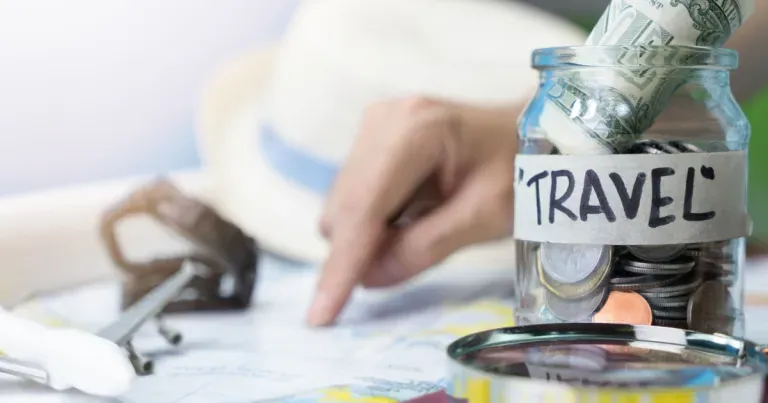
It’s been quite some time since we’ve asked ourselves: Where should I head for my next vacation?
But as travel bounces back after COVID-19, we’re finally dusting off our favourite maletas (or backpacks — whichever you prefer) to head to a new adventure.
That said, financing your vacation can be an extremely challenging task. Saving up for your next trip can even be harder especially if you’re on a tight budget and don’t have a lot of disposable income to spare.
Thankfully, this task isn’t impossible. With a little bit of patience and creativity, as well as careful planning and budgeting, you can embark on your dream vacation without breaking the bank.
In this guide, we’ll let you in on how you can finance your travels in a smart and practical way.
You will learn tricks on travel budgeting: how you can plan your vacation, find the best accommodation that fits your budget, manage your money while travelling, and many more.
Planning for your travels
You have a lot of heavy lifting to do before getting on a plane. Take a look at these tips below to make your planning process more smooth sailing.
Determining your travel goals and budget
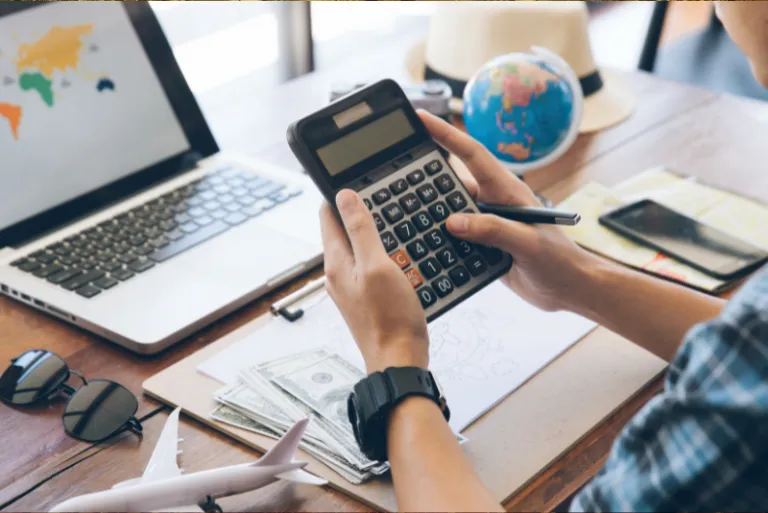
When planning your travels, it’s important to first determine your goals and budget.
Do you want to backpack through Europe or stay in luxury hotels? Do you want to immerse yourself in a new culture? Or maybe you just want to spend your days lounging on a local beach?
Once you have a clear idea of what you want to get out of your trip, you can start budgeting accordingly.
The key thing to remember is to set your budget at the start and work your way around it. Your budget will decide how long you will be travelling for, which destination you will be visiting, and what activities you will be doing.
The location of your travel destination also plays a huge factor in determining your budget. Some places are more expensive than others, so it’s important to research and compare prices.
For instance, if you want to stay in a luxury resort in Bali, you need to have a different budget than someone who wants to stay in a 5-star resort in Iceland.
Check out these budget-friendly destinations for Filipinos:
- Budget-friendly destinations outside of Asia
- Overseas budget destinations Filipinos can travel under P20,000
- Cheapest European Countries to Visit
Researching travel costs and ways to save money
Once you have determined your travel goals and budget, it’s time to start researching the costs of your trip. This includes identifying your big-ticket expenses like airfare and accommodation.
Next, try to see how much the extra transportation costs (like van transfers), as well as the activities you can do in the places you want to visit.
It’s also integral to not forget any expenses that come with getting a visa, vaccinations (if applicable), and travel insurance.
When researching travel costs, try to look into peak and off-peak seasons. By being more flexible on your travel dates, you can significantly lower the cost of your travel.
Creating a travel itinerary

An itinerary will allow you to have a clear idea of what you will be doing each day and help you to maximise your time at each destination.
Your itinerary doesn’t have to be immensely strict. You don’t have to account for each minute of your travels. It can simply be a rough draft that contains the activities you want to do, and places you want to visit.
As you create your itinerary, make sure to include a mix of activities that align with your travel goals and budget.
For instance, if you’re planning to backpack through Thailand, you may want to include some free walking tours, explore local markets and street food, and stay in hostels to save money.
On the other hand, if you’re planning a luxury trip, you may want to include spa days, fine dining, and private tours.
Don’t forget to factor in travel time between each destination, as well as downtime for relaxation. It’s important to strike a balance between adventure and rest to avoid feeling burnt out during your travels.
Finding affordable accommodations
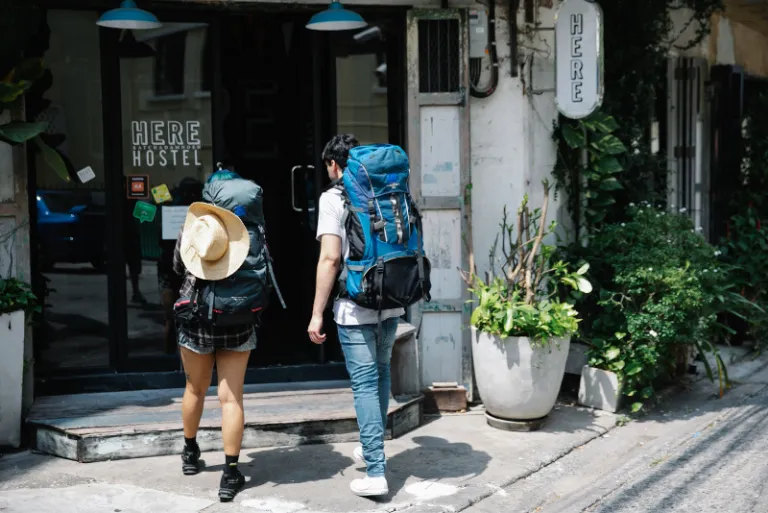
When it comes to travelling, one of the biggest expenses is accommodation. However, there are a variety of ways to find affordable options that fit within your budget.
First, consider staying in hostels. This is a popular option for backpackers and budget travellers.
Hostels offer dormitory-style rooms with shared bathrooms, making them an affordable option for those who are willing to sacrifice a bit of privacy. It’s also one of the best ways to meet people while travelling.
Another option to find affordable accommodations is through rental platforms such as Airbnb. These platforms offer a range of options from private rooms to entire apartments or houses, often at a lower cost than traditional hotels.
If you do prefer to stay in a hotel, look for deals and promotions online. Many hotels offer discounts for booking in advance, or for staying for a certain number of nights.
Booking platforms like Airbnb, Booking.com, and Agoda can help you score the best deals. Additionally, booking directly on the hotel’s website or social media account can also be an option.
Choosing transportation options
Depending on where you’re going and how far you’re travelling, there are a variety of transportation options available for you.
If you’re travelling domestically or near Manila, consider taking a bus, van, or carpool. These options can be much cheaper and offer a more scenic route. However, if you’re travelling internationally, flying is likely your best bet.
When booking flights, consider using websites like Skyscanner and Google Flights to compare prices and find the best deals.
Keep in mind that flights booked far in advance tend to be cheaper, while last-minute bookings can be more expensive.
When going around your destination, don’t forget to research the cost of public and private transportation.
Generally, travelling to places like Singapore is hassle-free because of its organised public transportation. If you want to go around Europe, a mix of trains and low-cost flights is recommended.
For those travelling in places like Bali, using Gojek or renting a motorbike is the best way to explore.
Financing your travels
Now comes one of the most crucial parts of planning: finding out where you can get the money for it.
For many people, saving up for a trip can take months or even years. However, there are a variety of ways to finance your travels quickly.
Saving for travel
Perhaps the most popular way to save up for your travel is to cut back on unnecessary expenses and put that money toward your travel fund.
This can include things like eating out less, cancelling unnecessary subscriptions, and reducing your shopping habits.
Another option is to find ways to make extra money on the side. This can include taking up a part-time job, selling unwanted items, or doing freelance work.
Using credit cards for travel

Another way to finance your travels is by utilising credit cards that offer rewards and perks for travel expenses.
Many credit card companies offer sign-up bonuses, travel points, and cashback rewards for travel-related expenses like flights, hotels, and transportation.
Some of the ultimate credit cards that you can use for travel include:
- PNB Mabuhay Miles World MasterCard
- Union Bank Miles + Platinum Visa Card
- BPI Skymiles Platinum Mastercard
That said, it’s important to use credit cards responsibly and only charge what you can afford to pay off in full each month.
Otherwise, the interest charges can quickly add up, making it difficult to pay off the balance and leading to debt.
Applying for travel loans
If you’re unable to save up enough money or utilise credit cards for your travel expenses, another option is to apply for a travel loan.
Many banks and financial institutions offer personal loans specifically for travel expenses. This will allow you to pay for your trip upfront. Then, you can pay back the loan over time.
When applying for a travel loan, it’s important to shop around for the best interest rates and terms. Look for loans with low-interest rates and flexible repayment terms.
Here are some of the best loans you can apply for to fund your travels:
Tonik Flex Loan
Loan amount: Up to P250,000
Loan term: Up to 24 months
Interest: Depends on the loan amount and terms
If you are employed and have an ATM card, then the Tonik Flex Loan is something you should consider. For this loan, you can borrow up to ₱250,000 with up to 24 months’ instalment period.
All you need to do is download Tonik, sign up for an account, and apply in-app. One of the upsides of this loan is its quick 1-day approval.
To apply for this loan, you need to be 23 to 58 years old, and have a minimum monthly income of ₱15,000. You also need to be a Filipino citizen or resident with a valid ID. Other requirements include:
- Bank Statement of Account (SOA)
- Bank ATM
- Valid Taxpayer Identification Number (TIN)
- Proof of Income
Citibank Personal Loan
Loan amount: Up to ₱2 million
Loan terms: 1 to 5 years
Interest rate: Depends on the applicant
Another personal loan you can apply for is the Citibank Personal Loan. Approval takes as fast as 24 hours, without any collateral or guarantor required. With this loan, you can choose between a 1 to 5 years instalment period. Here are the requirements for this loan:
- One valid government ID with photo and signature
- Latest Income Tax Return (BIR Form 2316 or latest 1-month full payslip (for Employed)
- Latest Income Tax Return (BIR Form 1701) and Audited Financial Statements (AFS) of the business with independent auditor’s report and balance sheets and tax receipt (for Self-Employed)
Unionbank Quick Loan
Loan amount: ₱1,000 to ₱1 million
Loan term: 1 month to 12 months
Interest rate: Starts at 1.3% per month
If you want to apply for a bank loan online, this is an incredible option. The Union Bank Quick Loan approval can take as fast as one minute. All you need to do is download the app or log into the website, and select the “you qualify for a loan” button.
Crowdfunding for travel

With the rise of social media, crowdfunding has become a popular way to raise money for various causes, including travel expenses. Crowdfunding is a way to raise money online by asking people to donate to your travel fund.
Platforms like Kickstarter and GoFundMe allow you to create a campaign and share it with your network, as well as potential investors.
To make your crowdfunding campaign successful, make sure to tell a compelling story and offer something in return for your donors.
This can be anything from sharing your travel experiences through blog posts and social media updates to offering personalised souvenirs from your trip.
Finding travel grants and scholarships
Another option for funding your travels is to look for travel grants and scholarships. These are often offered by organisations, foundations, and universities to fund travel for educational or research purposes.
To find travel grants and scholarships, start by researching organizations and foundations that align with your travel goals and interests. Look for opportunities that offer to fund specifically for travel expenses.
You can also check with your university or academic institution to see if they offer travel grants or scholarships in partnership with universities abroad.
For example, the Fulbright Foreign Student Program and GSLS Travel Fellowships by the University of Würzburg are two of the best scholarship programs for students who want to pursue education abroad (and travel at the same time). Embassies like New Zealand and Australia also offer similar opportunities.
Managing your finances while travelling
At this point, you’ve ironed out almost every important detail about your travels. All you need to worry about now is how you can manage your money while you’re in the destination itself.
Budgeting for daily expenses
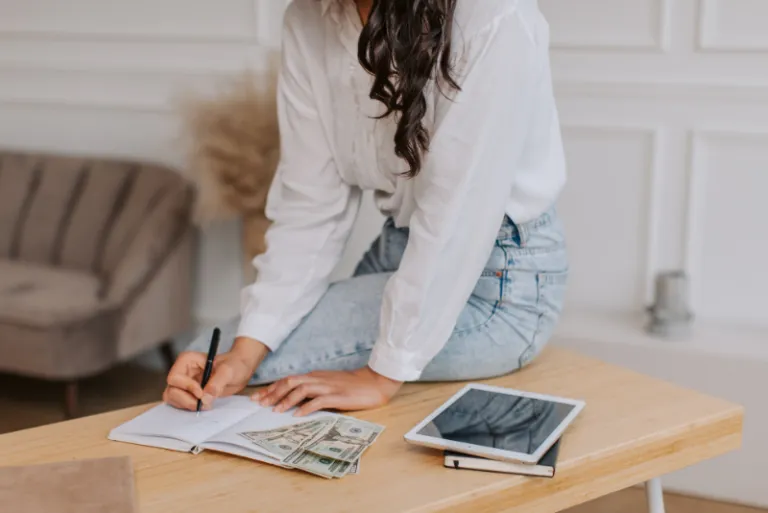
Obviously, you can’t spend 50% of your budget on your first day travelling. After all, you need to make sure you have enough money to last your entire trip.
Create a budget plan for your daily expenses before you go on your trip. This will help you keep track of your spending and avoid overspending.
You can research the average costs of these expenses in your destination and create a realistic budget based on that information.
Avoiding unnecessary expenses
As you travel, it’s essential to keep in mind that every penny counts. Avoiding unnecessary expenses can save you a lot of money in the long run. To do this, you must be mindful of your spending habits and avoid impulse purchases.
Try to limit your exposure to shopping areas and tourist traps. Instead, focus on experiences that are free or low-cost, such as hiking, visiting local markets, or attending free events.
You can also save money by avoiding expensive transportation options. Instead of taking Grab, use public transportation or walk to your destination if possible.
Using travel rewards programs

While travelling can be expensive, there are ways to reduce your expenses and even earn rewards while doing so. One way to do this is by utilising travel rewards programs. This is one of the most underrated ways to save money while travelling.
Travel rewards programs allow you to earn points or miles for your travel-related purchases. This can then be redeemed for future travel expenses or rewards.
There are several different travel rewards programs available, including airline rewards programs, hotel rewards programs, and credit card rewards programs. Before you start travelling, do some research to find out which programs are best suited for your travel needs.
For example, if you plan on doing a lot of flying, it may be worth signing up for an airline rewards program.
Monitoring your expenses
It’s easy to get carried away with spending when exploring a new place, but it’s important to stay on top of your budget to prevent overspending.
It’s also important to keep track of your expenses. This can be done using a simple spreadsheet or a tracking app like Spendee. By tracking your expenses, you can stick to your budget and adjust it if necessary.
Another way to stay on top of your expenses is to keep all your receipts and invoices organised. This can help you keep track of your spending and make it easier to create an accurate budget for the rest of your trip.
Making money while travelling
Making money while travelling is another way to sustain your travels. Here are some ways to make money while on the road:
Freelancing or working remotely
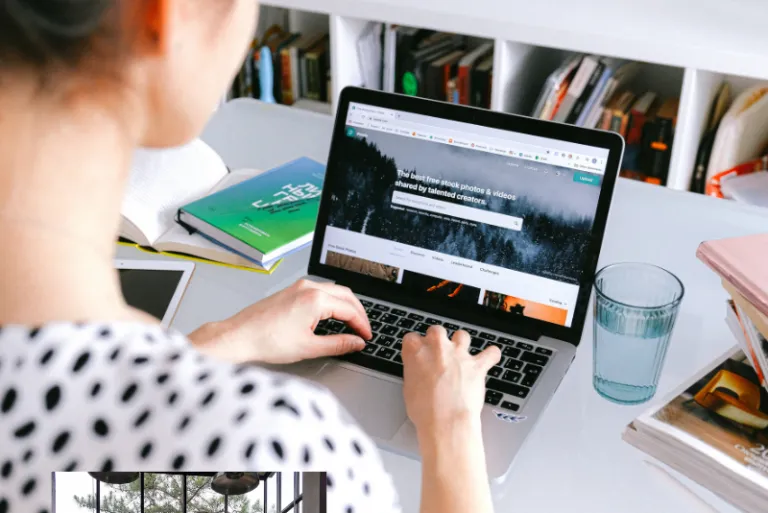
If you have a career that allows you to work remotely, consider taking advantage of this opportunity and freelancing while you travel. This way, you can earn money while exploring new destinations.
There are numerous freelancing opportunities available, such as writing, graphic design, web development, and more. Platforms like Upwork and Freelancer are great for freelancers who want to connect with potential clients and land projects while on the go.
If you have a specialised skill set, you can also consider offering your services as a consultant or coach. This can be done remotely, allowing you to work from anywhere in the world.
Teaching English abroad
English is a highly sought-after language around the world, and many countries are willing to pay English speakers to teach their citizens.
To teach English abroad, you’ll typically need a TEFL (Teaching English as a Foreign Language) certification. Once you have this certification, you can start applying for teaching positions around the world.
Teaching English abroad can be a rewarding experience that allows you to immerse yourself in a new culture while also earning money.
Volunteering

Volunteering is one of the best ways to travel because not only does it save you money, but it also ensures you are immersed in local culture.
While most volunteer positions are unpaid, some organisations offer a small stipend or free accommodations and meals in exchange for your time.
Some of the most popular platforms where you can look for volunteering opportunities include Work Away and World Packers, although these come with an annual membership fee. Here, you can find volunteer opportunities that involve art, working with kids, farm work, hospitality, and many more.
You may also simply message organisations on social media and ask them if they are looking for volunteers.
Starting a travel blog or vlog
Starting a travel blog or vlog can be a fun way to document your travels while also earning money.
To start a travel blog, you’ll need to create a website and start posting regular content about your travels. This can include destination guides, travel tips, and personal stories. Once you have an established audience, you can start monetizing your blog through advertising, sponsorships, and affiliate marketing.
Don’t want to start blogging or vlogging? No worries. Whether you’re a skilled writer, photographer, or videographer, there is always a demand for high-quality travel content.
Most hotels are always on the lookout for deals where you get free night stays in exchange for giving them content to post on their social media accounts or website.
Final thoughts

Travelling doesn’t have to be a heavy financial burden for you. As long as you exercise different techniques of travel financing, you can explore new destinations without breaking the bank.
Whether it’s saving up for your trip, taking out a loan, using travel rewards programs, monitoring your expenses, or making money while travelling, there are many ways you can make your dream vacation come to life.
That said, it’s important to remember that travelling isn’t just about stressing about money. It’s also about immersing yourself in new cultures, meeting new people, and experiencing new things.
So while you’re budgeting and looking for ways to save money, don’t forget to take time to enjoy the journey.
Featured image credit: Suphansa Subruayying via Canva Pro
Published at
About Author
MJ de Castro
Subscribe our Newsletter
Get our weekly tips and travel news!
Recommended Articles
10 Bantayan Island Resorts, Hotels, and Rentals for Your Tropical Escape 14 Best Credit Cards for Travel in the Philippines The only plastic we need for travel.
10 Best Mountain Cafes in the Philippines for Your Peak Coffee Experience Coffee date on the mountains, anyone?
My 10-Day Southern Vietnam Backpacking Trip for Less Than ₱15k 10 days in Southern Vietnam with less than ₱15k budget. Learn how this Filipina did it!
10 Family Outing Ideas in Metro Manila Under ₱500 Looking for a weekend bonding with the family under ₱500? Head to these places, pronto!
Latest Articles
Scoot’s Direct Flights from Singapore to Iloilo Are Finally Here — Here’s What You Need to Know Fly direct from Singapore to Iloilo with Scoot!
Cheung Chau Bun Festival 2025: Where to Go, What to Do, and How to Join Experience the thrill of the Cheung Chau Bun Festival 2025
New Theme Parks in Southeast Asia for Filipino Travellers Upcoming theme parks worth visiting
5 Must-Visit Family-Friendly Mountain Peaks in the Philippines Swap the mall for these family-friendly mountain peaks!
Mango Ranch Waterpark: Negros Oriental’s Hottest New Attraction Make a splash at Negros Oriental’s newest adventure hotspot!

